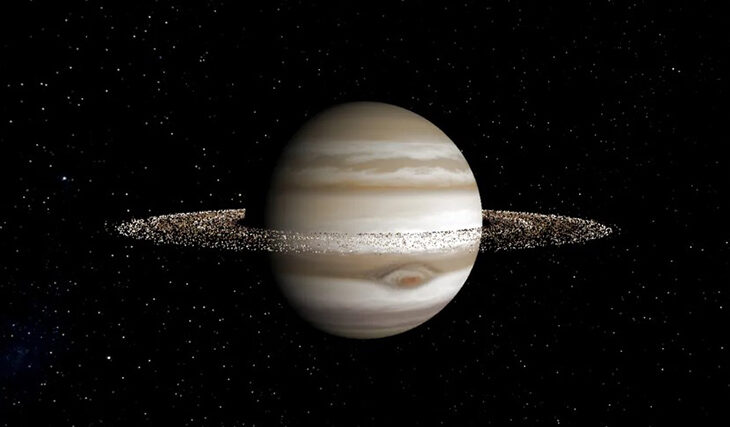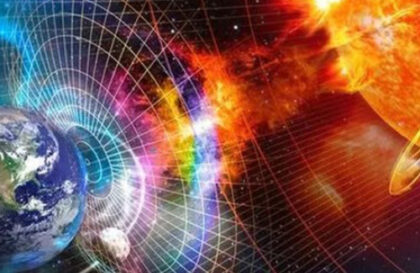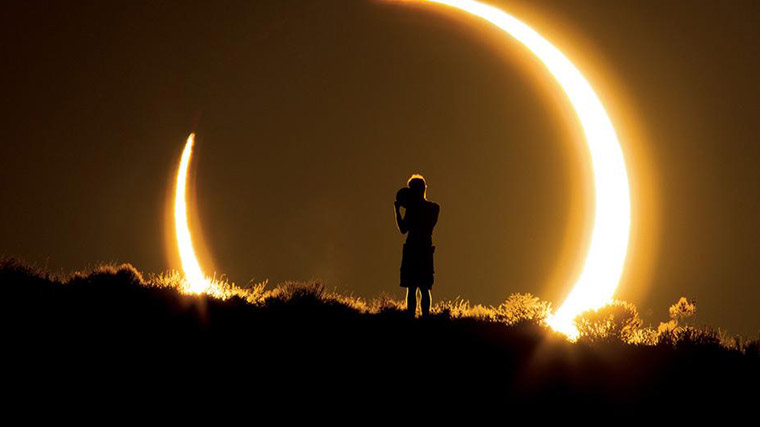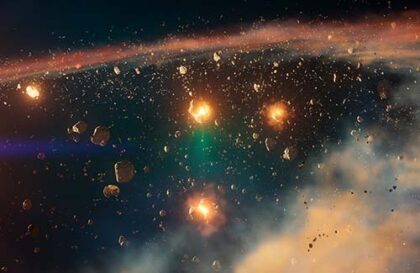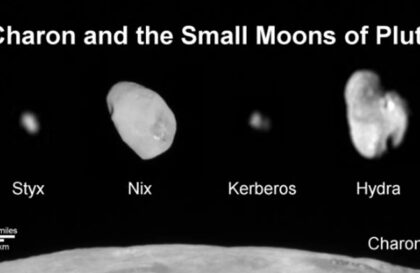What do the rings of Jupiter look like?
Jupiter’s ring system was the third to be discovered in the Solar System after Saturn and Uranus. It was first observed on March 4, 1979, by the Voyager 1 space probe. It has four main components: a thick inner torus of particles, a relatively bright, exceptionally thin “main ring” and two broad, thick, dim outer ones named after the moons of which they are composed: Amalthea and Thebes.
The width of the main ring is about 4,000 miles (6500 km).
The lifetime of dust particles in the ring is from 100 to 1000 years. They are slowly spiraling towards the surface of Jupiter. If the rings are not replenished with material, they will disappear.
The rings are replenished with dust that occurs during collisions between large bodies ranging in size from 1 cm to 0.5 km, as well as external comets, and meteorites that fall into Jupiter’s powerful gravitational field.
We build up the rings of Jupiter
But there is another hypothetical way:
If all the planets are moved closer to Jupiter, then he will tear them apart, increasing the mass and size of his rings.
If all the planets are moved closer to Jupiter, then he will tear them apart, increasing the mass and size of his rings.
The gas giant Saturn will be the first to be torn apart. For him, the Roche limit is 131,000 miles (211,000 kilometers).
Then Uranus and Neptune will be torn apart. They must be brought closer to Jupiter by 49-55 thousand miles (80-90 thousand kilometers).
At a distance of 37,000 miles (61,000 kilometers) from Jupiter, Mars will shatter into pieces.
Then Venus and Mercury. For them, the Roche limit is about 34,000 miles (55,000 kilometers).
The Earth must come closest to the giant to be devoured. A total of 34,069 miles (54,830 km).
Roche limit
The Roche limit is the critical distance between two bodies at which the action of tidal forces goes from surface deformation to destruction of the body due to tidal forces. This phenomenon gets its name from the French astronomer Edouard Roche, who first described it in the 19th century.
Mathematically, the Roche limit can be expressed in terms of the masses and radii of two bodies and the coefficient of slow thickening (Love number), which characterizes the deformability of the body. The Roche limit depends on the internal structure and mechanical properties of the bodies. For example, for a light satellite, such as the Moon, located next to a planet, the Roche limit may be relatively close, while for denser bodies, such as planets, this distance will be greater.
One of the most famous examples of the Roche limit is Saturn’s moon Mimas. Mimas has a huge crater that makes it similar in shape to the “Death Moon” from the Star Wars movie. If Mimas were to approach Saturn within less than the Roche limit, the forces of the tides could destroy it.
Roche limit values vary for different bodies in the solar system. For example, for the satellites of Saturn, the Roche limit can be at a distance of about 2.44 planetary radii, while for the Earth and its Moon, this distance is about 2.9 Earth radii.
Why don’t tidal forces tear people apart on Earth?
This question comes up. Because if the tidal forces of the planet tear other bodies to shreds on the way to it, then people are already on the surface.
The answer is that our bodies are not held together by gravity. It is held together by the chemical bonds (electromagnetic force) between the molecules and cells that make us up. These chemical bonds are many orders of magnitude stronger than the tidal forces we face on Earth.
A person weighing 70 kilograms and up to 2 meters tall has a maximum tidal force of about 0.0154 Newton. This force is very small and does not have a noticeable effect on the human body. We don’t feel it
Image credit:
https://www.space.com
